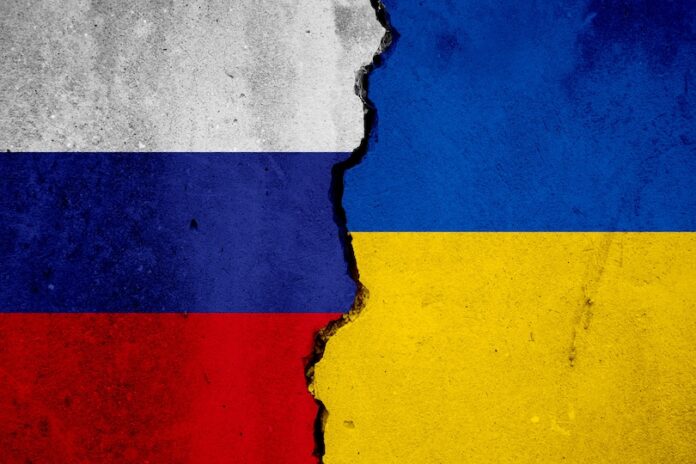The war in Ukraine has revolutionized our understanding of military combat and international politics in the 21st Century. Previous analyses of war’s effects, including this one, have been categorized by sub-disciplines like International Relations (IR), Security Studies, International Political Economy (IPE), History, Historical Sociology, Public Administration, and Psychology. However, a new set of studies, when viewed collectively and through an interdisciplinary lens, reveals the deep and complex ripple and washback effects of the war. These effects impact human life, human development, economies, values, attitudes, policy, governance, and power relations globally. The complexity arises from the myriad actors involved, the aspects of human society affected, and their interconnectedness. The interactions between these societal layers create feedback loops that can influence the evolution of conflict and its potential resolution in the future.
To extract essential lessons from the War in Ukraine and prevent similar conflicts in the future, reductive approaches must be replaced with a comprehensive, integrated analysis. The introduced framework illustrates these ripple effects, providing valuable insights into the war’s impact. This article will further examine these aspects, highlighting their interconnections.
While the war in Ukraine continues to inflict daily devastation and trauma, its long-term consequences on human capital and the economy are immeasurable. Projections indicate a significant decline in total productivity up to 2035 and a slow recovery thereafter. These projections may even underestimate the conflict’s true impact. Productivity losses also have repercussions on tax revenues, with martial law restrictions disrupting revenue systems. In contrast, legislation changes implemented during military rule positively influenced the business sector. However, the prolonged military operations demand costly tax system reforms to address ongoing instability. This historical pattern suggests that wars prompt tax system reform to sustain war efforts and address tax justice demands, influencing peace conditions and future economic growth.
Moreover, the war’s economic impact is exacerbated by the timing of the COVID-19 pandemic recovery. This overlap has led to severe consequences in agriculture, food production, and supply chains globally, especially affecting food access and quality in the Global South. These impacts influence attitudes towards the conflict in countries reliant on Ukrainian or Russian imports. Uncertainties stemming from the conflict have adversely affected global financial markets, escalating commodity prices. Europe’s financial situation appears worsened post-war onset, although certain European states benefit from favorable commodity prices.
Consequently, a comprehensive approach integrating these dimensions is crucial to comprehend the war’s socio-economic aftermath fully. This holistic approach must account for competing interests to prevent further fragmentation and unite around shared European values, beliefs, and attitudes.
Furthermore, the war’s effect on values, beliefs, and attitudes, particularly the formation of a unified Ukrainian identity, is noteworthy. Ukrainian agency shapes this identity, portraying Ukrainians not as powerless victims but as valiant defenders of their homeland. This narrative strengthens troop morale, influences peace prospects, and aligns with larger European narratives of “us” versus “them” regarding Russia. Threat perceptions and attitudes towards collective defense and NATO across Europe have escalated, highlighting increased trust in NATO over the EU.
Besides these impacts on human life, the economy, and values and attitudes, the war has reshaped governance and policy frameworks significantly. The conflict has hampered international cooperation, fostering divisions at political and expert levels across various domains. Regional governance, in particular, has witnessed substantial transformation due to the conflict’s continental extent. Implementing policy changes in response to the crisis has catalyzed updates in neglected areas like cybersecurity and generated shifts in migration and refugee policies.
The crisis has also diversified the EU, reduced gas dependency, and fostered new gas deals. However, not all areas experienced dramatic change; EU arms collaboration, for instance, remains relatively unaltered, increasing fragmentation and non-EU dependencies.
China’s expanding influence over the conflict aligns closely with Russia, yet it seeks to project neutrality amidst US/West-Russian tensions. India’s neutral stance and oil imports from Russia have sparked debates on the country’s position. Asia’s political landscape, especially concerning the liberal international order, is evolving due to the conflict.
In conclusion, the war’s far-reaching effects continue to impact state, market, and societal spheres globally, affecting multiple layers interconnected across human life, development, economies, values, governance, and power relations. These effects necessitate a holistic consideration and deeper understanding to forge pathways for peace and reconstruction.
Figure 1: The ripple and washback effects of war. Source: authors.
This article is derived from the Policy Studies Special Issue ‘The effects of wars: lessons from the war in Ukraine’, guest edited by the authors.




